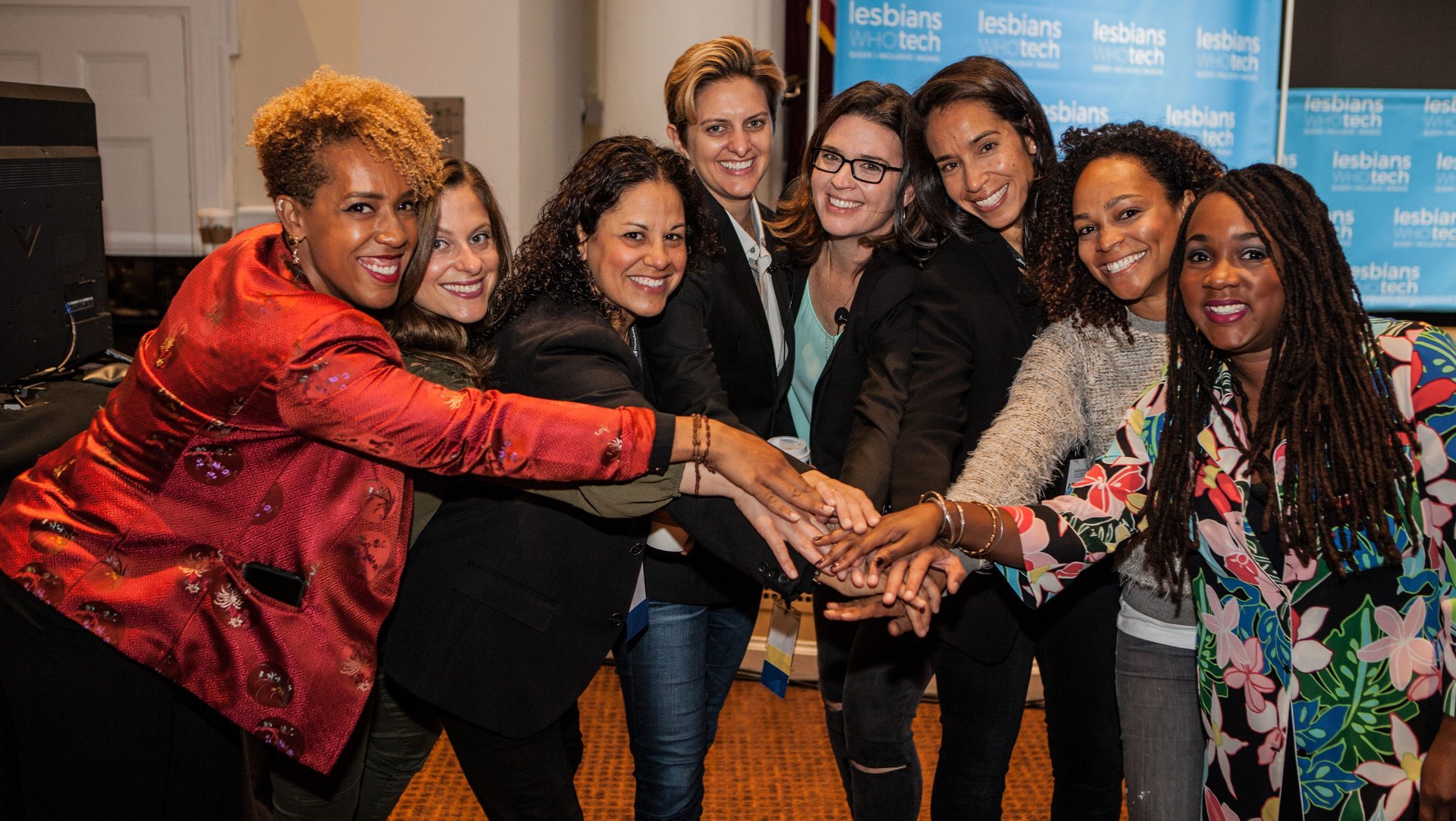Why Silicon Valley needs quotas to solve its diversity crisis
I realized I needed to be intentional about diversity shortly after I started Lesbians Who Tech, a grassroots community of 40,000 non-binary individuals, women, people of color, and LGBTQ technologists from across the globe (and the people who love them, i.e. our allies). Even though we’re an organization with a mission of promoting diversity in tech and creating visibility for queer women, we quickly found ourselves with a disproportionately white membership and predominantly white speakers at our first summit.


I realized I needed to be intentional about diversity shortly after I started Lesbians Who Tech, a grassroots community of 40,000 non-binary individuals, women, people of color, and LGBTQ technologists from across the globe (and the people who love them, i.e. our allies). Even though we’re an organization with a mission of promoting diversity in tech and creating visibility for queer women, we quickly found ourselves with a disproportionately white membership and predominantly white speakers at our first summit.
My good intentions were simply not good enough.
So we took a simple step and implemented quotas: 50% of our speakers had to be women of color. Later, we mandated that 10% of our speakers be non-binary and trans and 20% of our speakers be black and latinx. We’re not done: we plan to do the same for veterans, mothers, and people living with a disability.
Implementing quotas not only changed the way we operated—we created tracking systems to make sure we were on target to meet our quotas, because what gets measured is much more likely to get done—but it changed our community. It meant thinking about representation during every hiring process, planning meeting, or public event. It meant having some difficult conversations with friends, colleagues, and even with myself. It meant saying no to very successful and established white women. But change and evolution is often uncomfortable, and discomfort and friction are the keys to growth.
Over the last five years, the tech industry has spent over a billion dollars trying to solve one problem: our lack of diversity. But too many companies–from startups to tech giants–have failed to embrace this basic step of setting quotas, one of the simplest mechanisms for leveling the playing field.
It’s understandable why companies are hesitant to implement an overt quota system, given that the legality of employment quotas can be fuzzy. Google was recently hit with a lawsuit from one of their former recruiters, who disagreed with the company’s quota hiring practices. But the gray area around the legality of quotas will not change without active leadership and engagement at the highest levels and taking risks to ultimately implement change for good.
That means that the battle for challenging the legality of hiring quotas and pushing for a new, fresh system will ultimately be in the hands of CEOs—mostly white, straight, cis-men.
Our decision to set quotas has been extremely effective. Today, our tech conference is one of the largest LGBTQ professional events in the world, one with speakers that are not only curing cancer and building rocket ships, but are 50% women of color, 25% black or Latinx, and 10% gender non-conforming or transgender. And these quotas not only helped us go outside our biased networks to find leaders, or change the criteria of how we choose speakers, but it allowed us to build trust with underrepresented communities, and in doing so our attendees are also now 40% people of color.

The empirical evidence is clear that quotas outside of our organization, too, are successful at boosting diversity, and fast. In Norway, for example, where the government passed a law to require all companies to implement a 40% quota for female representation on their boards, the percentage of women on corporate boards rose from 7% in 2003 to 40.3% in just seven years. They found that quotas did not lower the quality of board candidates, but simply forced people to shift the criteria and look outside their biased networks for talent that was hiding in plain sight.
Effective quotas do not mean we hire people for one thing and one thing only. You should be hired because you’re a woman who is also at the top of your field, because you’re latinx and incredibly creative, because your gender identity is non-binary and so is your way of thinking, because you live with a disability and you’re the best problem solver in the room. You are unique and you have value that companies need, and that should be given a proxy just like prerequisite experience or the college you graduated from.
Quotas are surely not the only way to create urgency around diversity and inclusion. But, as Uber’s Bozoma Saint John said at our 5th Annual Lesbians Who Tech + Allies Summit last week, “a lot is tied to bonuses in tech—why wouldn’t diversity be one of them?” What if we incentivized diversity with bonuses or created legislation offering tax savings for companies whose employees represent the people who live in America? What if we could follow the lead of countries who have passed legislation enforcing quotas for women on corporate boards?
Silicon Valley wants to believe that we live in a meritocracy, but we need to accept that we live in a sexist, racist and anti-LGBTQ world, and that investing in pipeline programs and unconscious bias training alone is not going to close the hiring gap. We have to fight discrimination every day and with intention. Too often, our industry has also been quick to blame a poor “pipeline” for its lack of diverse candidates, but we know that’s not the whole truth. It’s past time for Silicon Valley executives to do more.
Leanne Pittsford is the founder of Lesbians Who Tech, a global community of 40,000 queer women in the tech industry.
This story is part of How We’ll Win, a project exploring the fight for gender equality at work. Read more stories here.